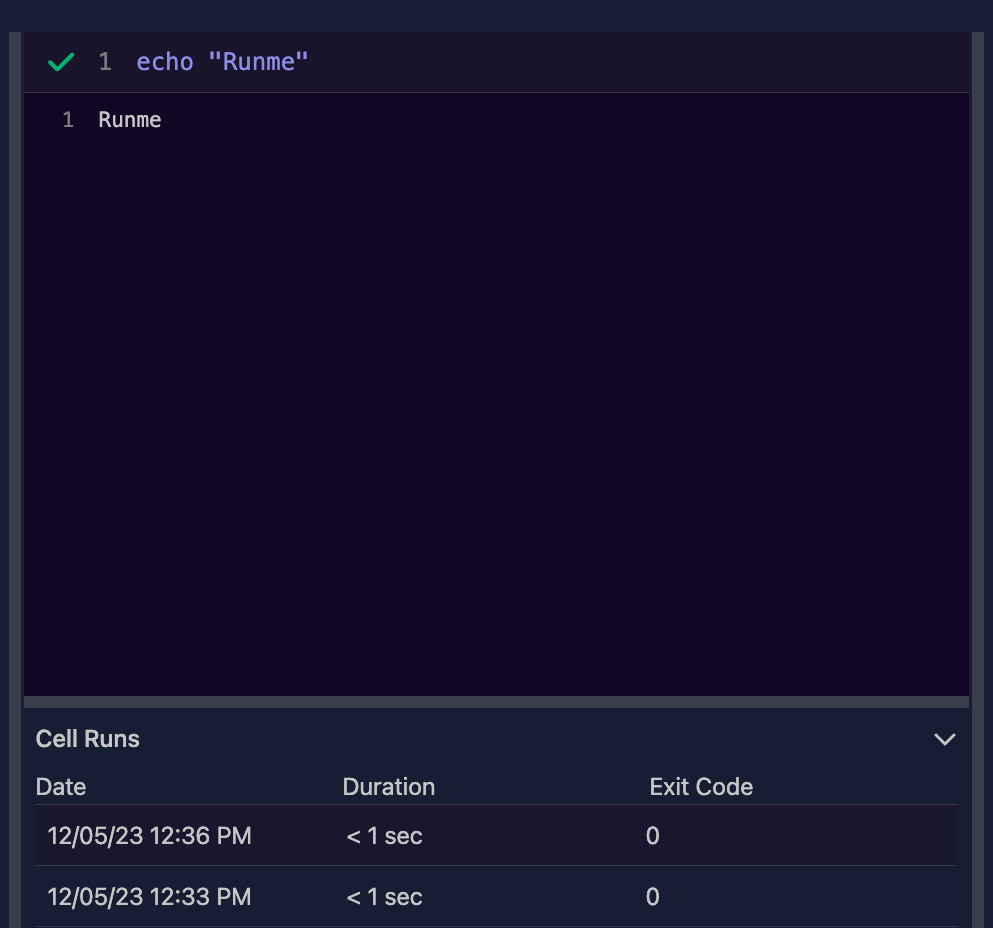Lifecycle Identity in Runme
Would you love to easily track the changes you have made to your document or monitor its history? The Lifecycle Identity feature in Runme makes this easy for you.
What is Lifecycle Identity?
The Lifecycle Identity feature in Runme is a tool that assigns unique identifiers and versions to individual cells, the entire file, or both, depending on your configuration.
With this feature, you can easily track changes, versions, and the complete history of your documents using the assigned identifiers.
The default setting assigns a unique identifier to the cells and the Markdown file.
Usage
The following metadata will be added to your Markdown file :
id: The unique identifier that represents the specific instance of your document or cell.
version: The current version number on your document or cell is the version of Runme you are using.
Here is a sample of what the lifecycle identity on your file looks like:
runme:
id: 01HFY0VFSB5F1PF7C28BW2YSVT
version: v2.0
Note: Each document or cell will have a unique identifier generated by Runme. Do not edit these to avoid conflicts.
Configuration
To update the Lifecycle Identity feature in Runme, follow these steps:
- Navigate to Runme's Extension Settings on your VS code. Click on the Settings icon and select Extension Settings. The Runme extension can be found in the extension toolbar on the left side of your screen.
- Next, choose the tracking level by selecting the document you wish to enable lifecycle identity tracking.

As shown in the image above, there are three levels of tracking available:
- Cell level: This tracks changes within individual cells in a document.
- Document level: This monitors the entire document for any modifications or version changes.
- All: This tracks changes made to both Cell level and document levels.
Cell Run Grouping
Cell Run Grouping is an important tool in Runme that works together with the Lifecycle Identity feature. It improves the organization and tracking of code runs, especially when working with Markdown files or individual cells within these files. This functionality works when outputs are saved to the Runme Cloud, as it allows for a more structured and insightful analysis of the code's performance over time.
How Cell Run Grouping Works
When a user saves the output of a cell or an entire Markdown file to the Runme Cloud, Runme assigns a unique identity to that file or cell. This identity is important for the cell run grouping process, as it ensures that any subsequent iterations or runs of that file or cell are recorded and grouped under the same identity in the cloud.
Here is a breakdown: Whenever a code is run, the output is stored in the same group as the previous, with the exact time of each run clearly stated. This chronological arrangement of each code provides a comprehensive view of the code's changes and performance over time.

Cell grouping is not just a simple collection of executed commands in a cell or document but it is an organized, time-stamped record of each run.